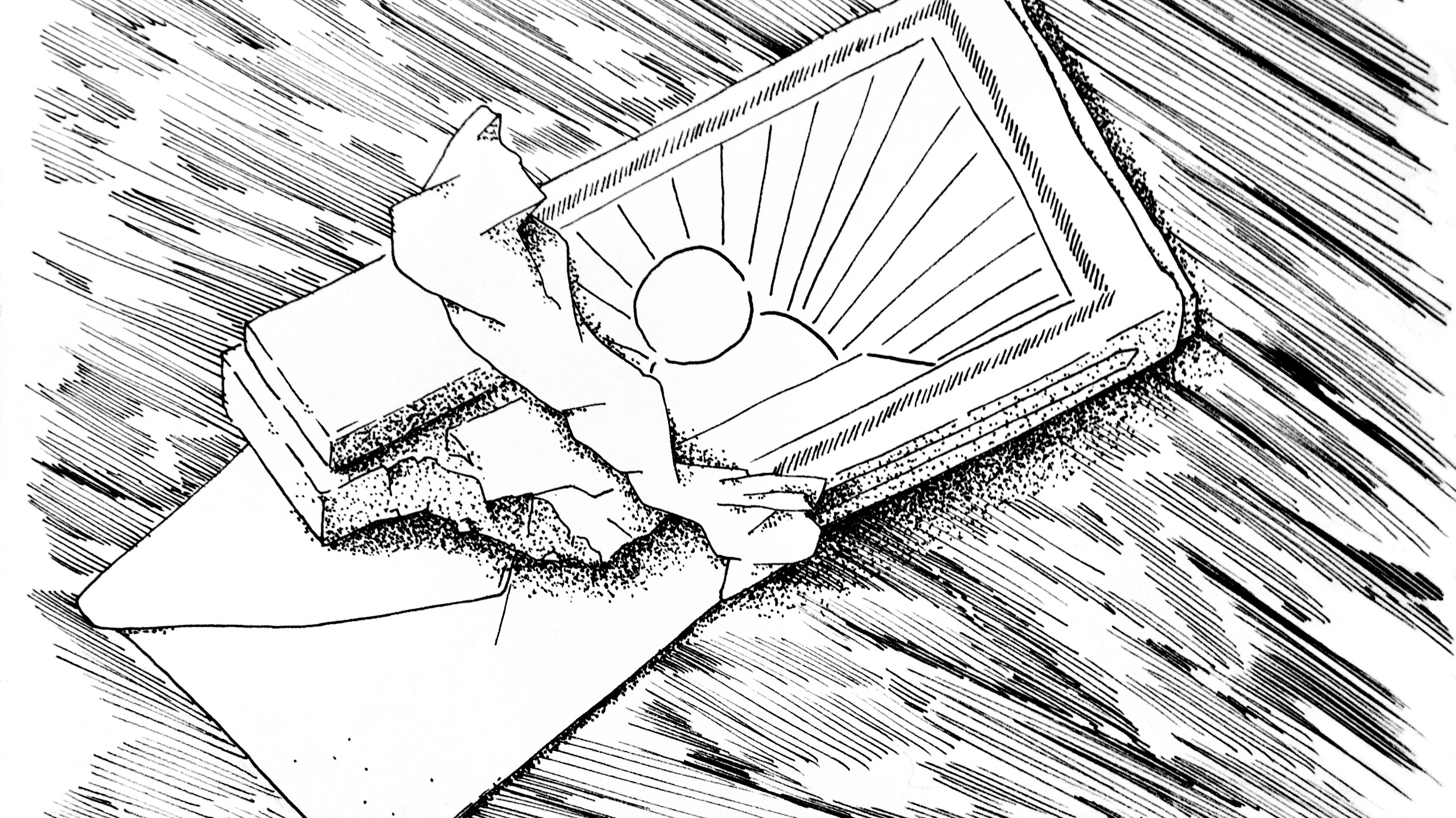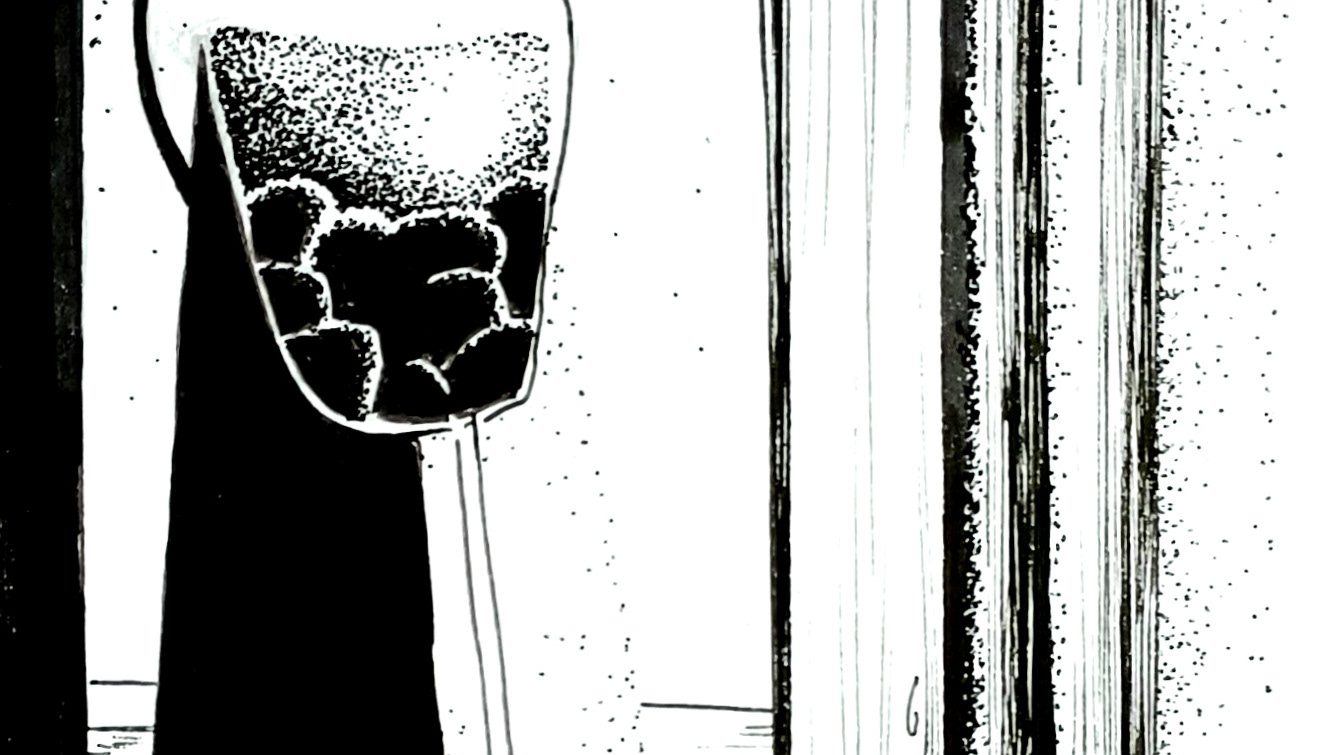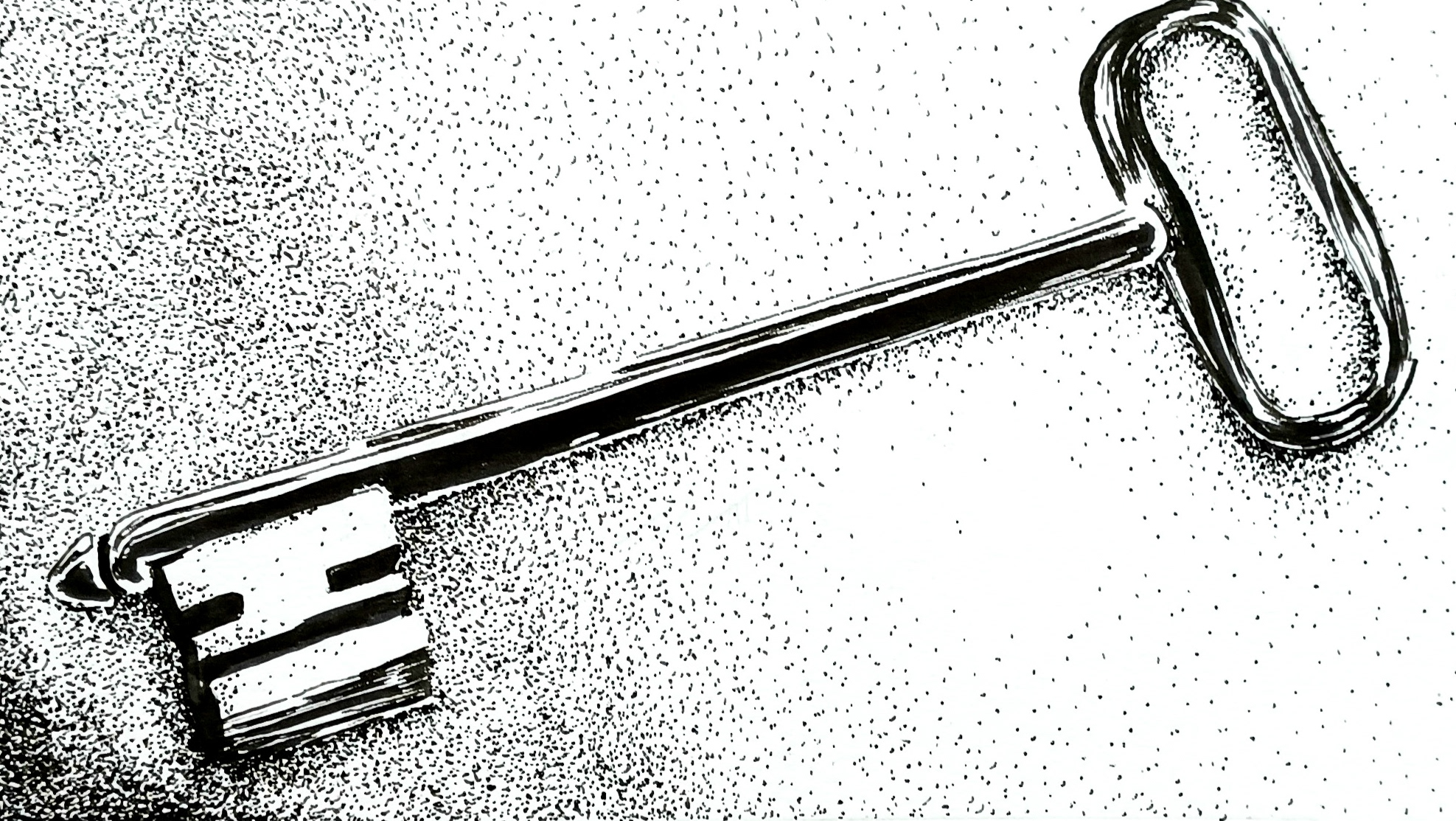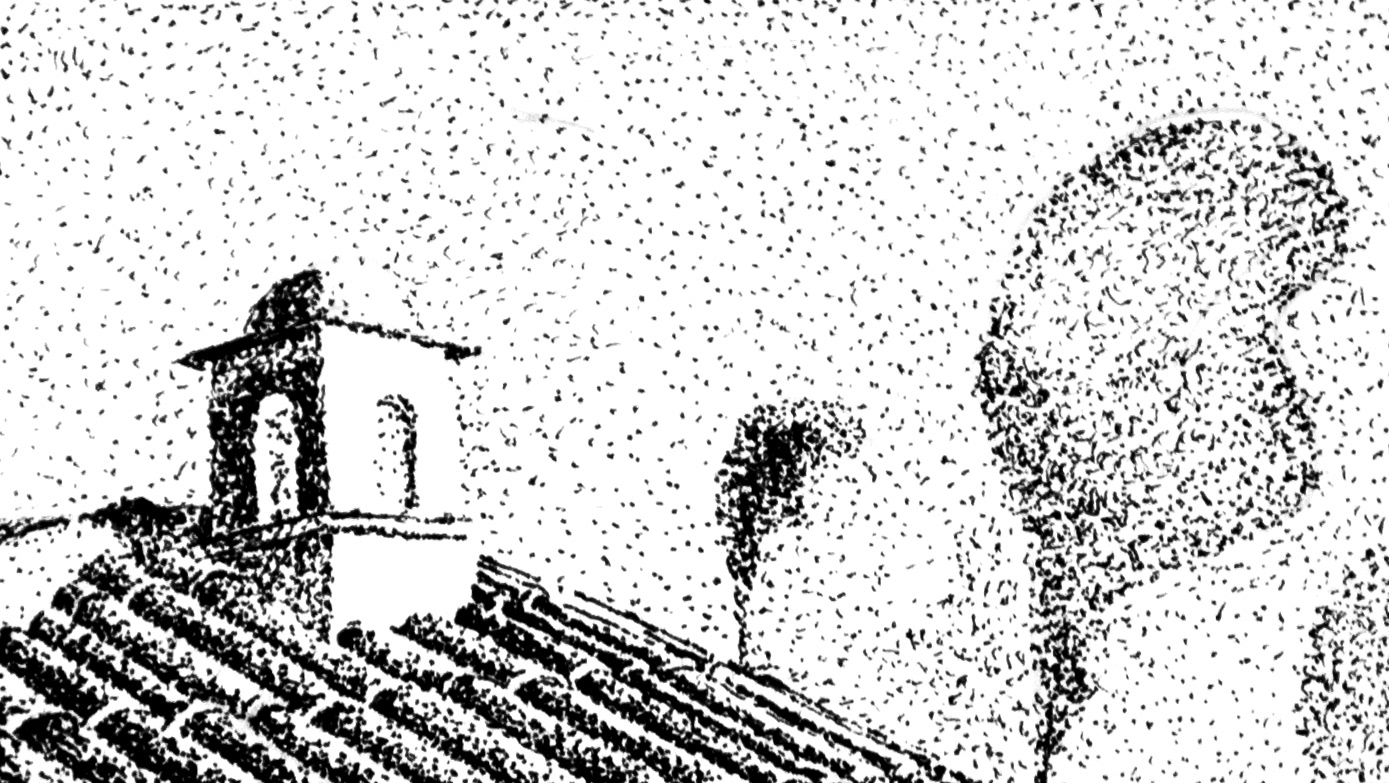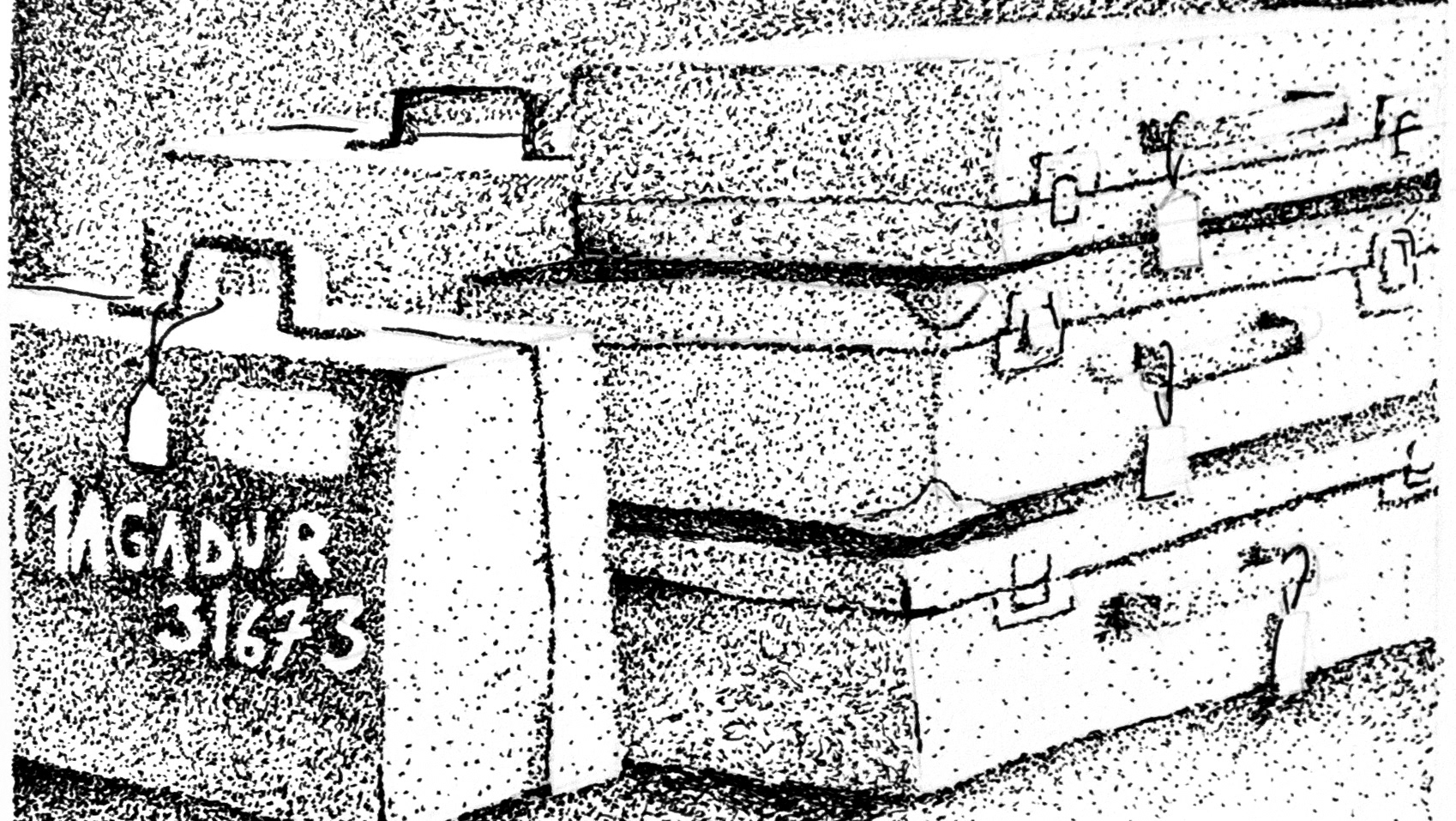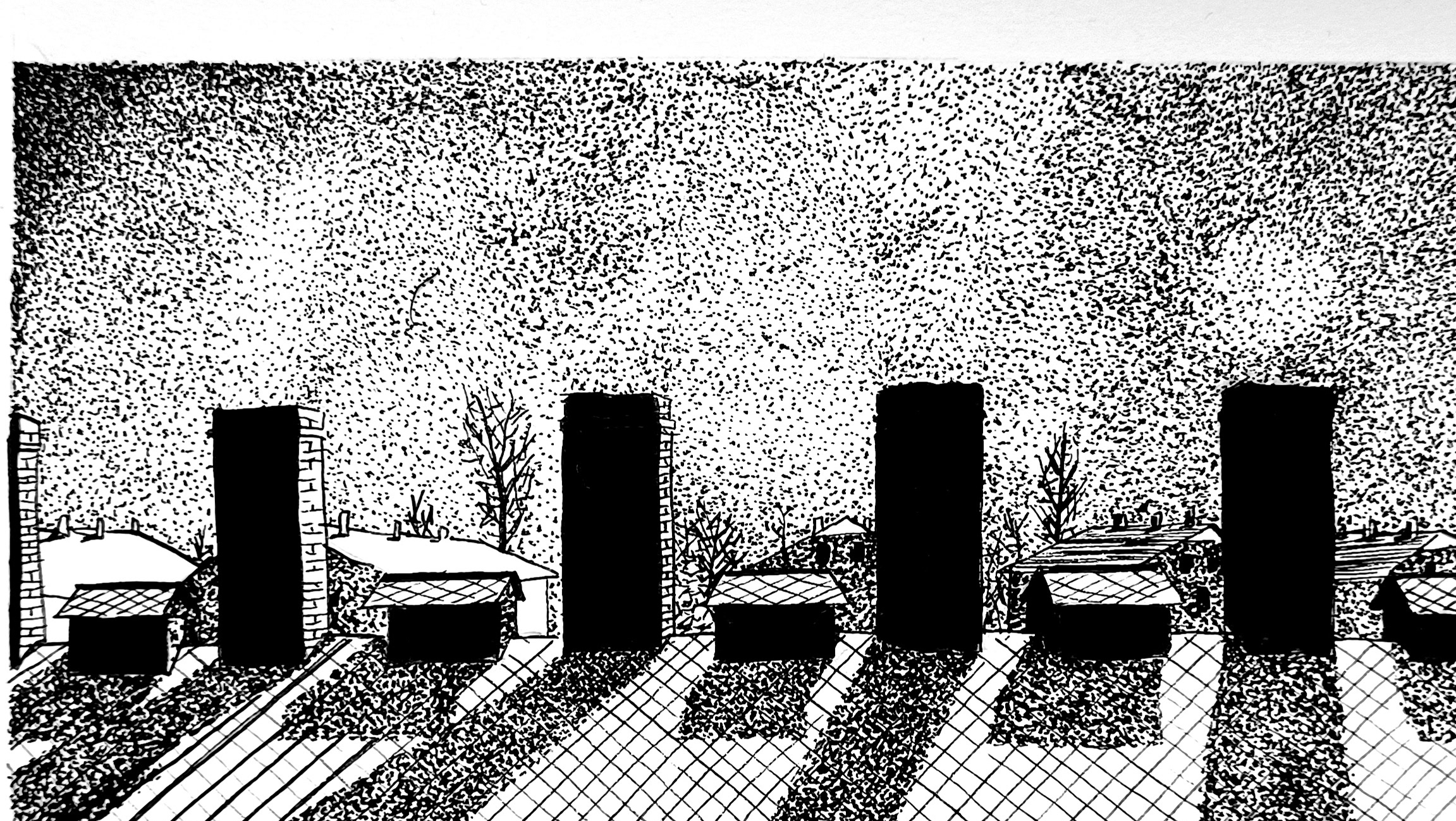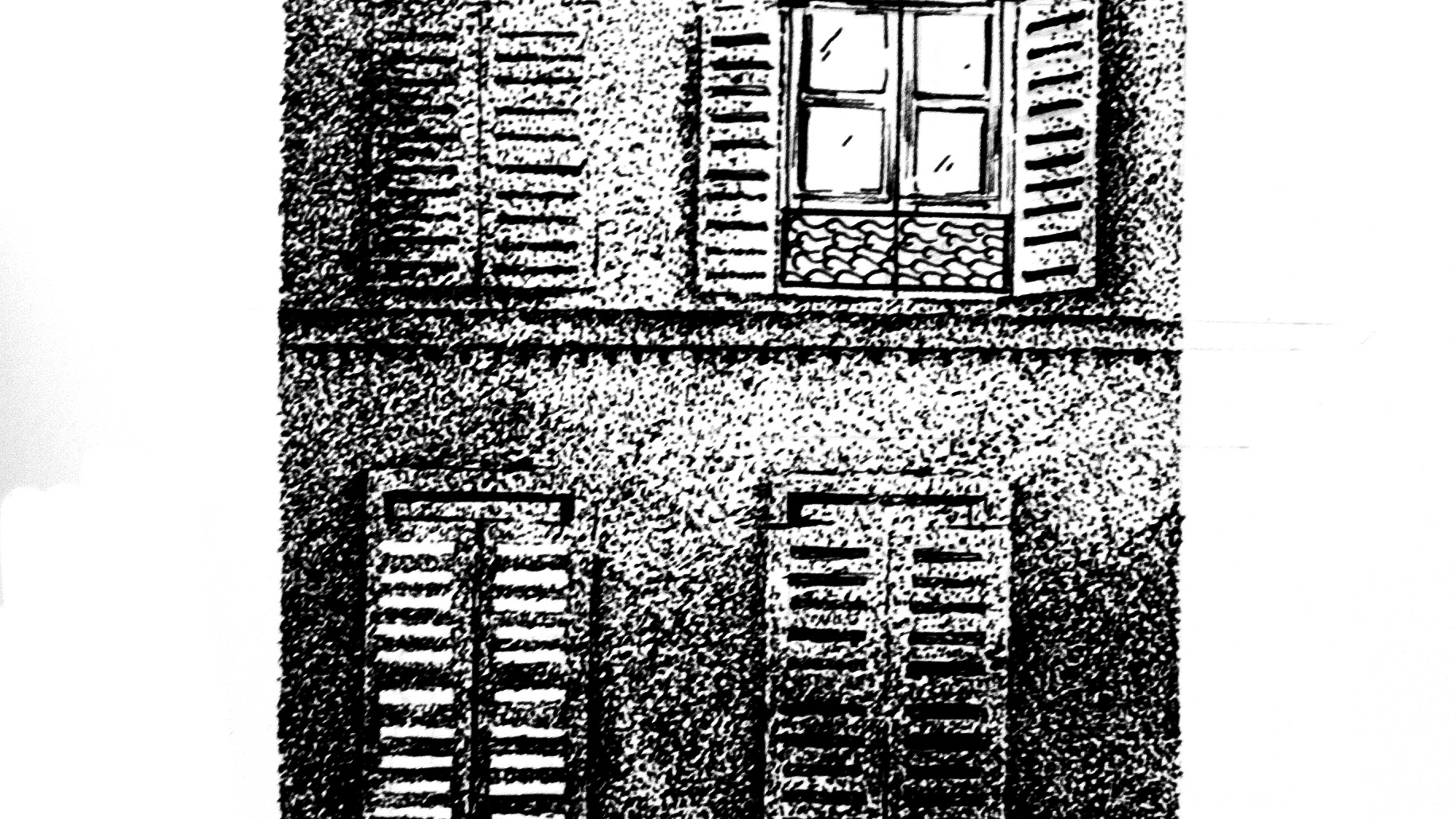the broken stool
Today is a day in July 1943. Manette climbs on a stool to reach the top of a truck and unload coal in it. The stool breaks suddenly, Manette falls, she breaks her ankle.
A small accident like that, it'll cost her life, she knows it will, Manette has seen enough people sent to the gas chamber for much less than this.
Back in 1942, Manette has 7 brothers, one of them is married to Olga Godefroy, 3 of them are resistants. Manette helps too, she hides a few things at her place, but she prefers her husband not to know.
In August, all her brothers were arrested for what 2 of them did. The police was looking for Manette, a group of kids ran to warn her before she came back home. Manette didn't want her husband to be arrested for her, so she came to the police. Olga went to the police too, hoping that her husband Louis, wouldn't go to jail for it. Yet Louis had a similar idea, so at the end, Louis, Olga and Manette all were deported.
In Birkenau, Manette was sent to the Revier, not as a patient, but as a cleaner. 2 days later, Olga came in, her back broken, she had been beaten very hard. There was nothing Manette could do, only spending Olga's last moments with her.
Back to the present, Manette is sent to Auschwitz, where she can receive better treatments. A doctor tells her he will have to cut her leg, Manette refuses, she might as well be dead. The polish surgeon tells her she will die anyway, so she still has a better chance of survival alive with one leg than dead with two.
When she wakes up, her leg is gone. She can't help thinking she is already dead. She has seen what happened to those with disabilities, she saw Alice Vitterbo, the singer, caught on the 10th of February's run. How could she run with a wooden leg on such a slippery snowy ground?
Manette is brought back to Birkenau, a SS comes with her. He was there during the whole operation, he couldn't believe how brave she was. He tells her she can ask anything she wants.
Manette asks for a friend, a 31000. If she is to die soon, she wants to spend her last moment with someone. Betty comes, they are to stay together.
Betty is an improvised nurse, she learnt on the spot. She was also a hell of a resister, she liaised with the FTP across the country, by train, by bicycle, by foot if she had too. The resistants knew her as Betty, the police knew her as Lucienne Langlois, her ID was as perfect as it was fake, none of those names were her real name. Lucienne never told the police, she kept her real name for herself.
At first, Manette doesn't say much, all she needs is a presence, silence suits them both. Soon they start talking, about their past. Manette describes Olga, her 2 kids, her husband. Lucienne mentions her companion Lucien Dorland, her friends Nicole, Mai Politzer, Danielle Casanova. Lucienne caught the typhus in the same time as Danielle and Mai, Lucienne and Danielle stayed in the same room, Lucienne saw Danielle dying, she was there during her last moments.
The more they talk, the more they start talking about the future, to both their surprise. The future, hope, those are strange new concepts now. Yet there is hope, still, they want to survive, to testify, to keep fighting. There is hope for Lucienne Langlois, as well as for Madeleine Passot, her real name. And there is hope too for Manette, as well as for Aimee Doridat, her real name. As long as there is a will, as long as there is solidarity, between the 31000 and between all prisoners, then there is going to be hope.
After a few more days, Manette is given crutches. She knows she is unlikely to survive, but she will try anyway.
She has to try.
Notes
Thank you for listening to this episode of 31000/45000, the story of 2 trains of french members of the resistance. My name is Matthieu Landour Engel.
This episode was about Aimee Doridat and the surgery she underwent in Auschwitz. It somewhat sounds surprising that Aimee Doridat underwent a surgery on her leg, as disabled people were almost automatically sent to the gas chambers, so there is a big contradiction there. Yet surgeries were performed in the surgical ward, as training, or experimentations, or sometimes the SS physicians wanted to exercise their skills. It is highly contradictory that such a place of pain could also perform sometimes medical surgeries yet it was all in the benefit of prisoners like Aimee.
Aimee Doridat did survive the surgery and she did survive the camps. She had to learn to walk again, she had to hide constantly, otherwise she would have been selected to the gas chambers. Marie-Claude Vaillant - Couturier warned Aimee whenever a selection was about to happen, and the other 31000 helped her hide. Her survival was unlikely, in auschwitz and even more in Ravensbruck, where she was deported afterwards. In the last months, the situation was particularly difficult for women like Aimee , she was saved by the 31000 and other women, some she didn’t even know. That says a lot to the power of solidarity, because Aimee survived, and did come back to France and found her children and husband, alive.
I would like to give you a few informations about Madeleine Jegouzoo / Passot, which was known under the name Lucienne Langlois by the german and french authorities. Madeleine was a fascinating woman who helped building the communist resistance structure. She travelled a lot and liaised with a lot of separated resistance structures, so to build communication between each of them. She crossed the demarcation lines several times, in order to relay the different people and networks, which was a very difficult feat at the time.
She had a long list of nicknames, made to protect her identity, Gervaise, Betty, Monique, and even ongles rouges, which means red nails, as she was a particularly elegant young woman. She also used a friends id and had her own fake id, Lucienne Langlois. She was arrested with that Id in Paris, the authorities only knew her as Lucienne Langlois.
I made assumptions about what sort of discussions Aimee and Madeleine had during Aimee's recovery, I don't have any way of proving what they could have been talking about.
I mentioned Alice Viterbo a few times. Alice Viterbo was an opera singer, she had a car accident and lost a leg, she then teached singing in Paris. It is not known why she was arrested, she may have been part of a gaullist, which means close to the general De Gaulle, resistance group. She had a wooden leg, and her surviving chances were very low. She was caught during the 10th of February race, she couldn't possibly run as fast as the other prisoners. She was sent to a starving block and survived the longest there, until she finally died. There is a very poignant chapter about Alice Viterbo and her wooden leg in Charlotte Delbo’s book, “none of us will return”.
My sources for this story mostly come from the book Red triangles in Auschwitz, by Claudine Cardon Hamet, le convoi du 24 janvier by Charlotte Delbo, the website deportes-politiques-auschwitz.fr, memoire vive, the foundation for the memory of deportation website , the Maitron website, and the fantastic website auschwitz.org .
I also have had the chance to meet with Yves Jegouzo, the son of Madeleine Passot, who gently gave some of his time to talk with me and send me notes regarding my work. Thanks to him, I was also introduced to the Memoire vive organisation. I must advise you his book, Madeleine dite Betty, deportee resistance, by Yves Jegouzo.
I have been trying to find Aimee Doridat’s relatives, unfortunately, my research was unsuccessful. If by any chance, you know of someone related to her please let me know, I would be very pleased to get in touch and make sure the text I wrote doesn’t contain any errors.
Thank you very much for listening, the next episode will be about Suzanne Pierre and the beginning of the quarantine for the 31000.
TRADUCTION FRANCAISE
Aujourd’hui nous sommes en Juillet 1943, Manette grimpe sur un escabeau pour atteindre l'arrière d’un camion et verser un seau de charbon dedans. L'escabeau se brise, Manette s'écroule dessus, ainsi que le lourd contenu de son sceau. Elle se casse la cheville.
Un accident comme celui-là arrive, on peut s’en remettre. Mais pas à Birkenau, Manette sait qu’elle ne survivra pas, elle a vu tant d’autres envoyées dans les chambres à gaz pour bien moins qu’une cheville cassée.
Un an plus tôt, Manette avait 7 frères, 3 résistants, l’un d’eux marié à Olga Godefroy, Louis. Manette les aide, elle cache chez elle du matériel, mais elle préfère que son mari ne soit pas au courant.
En août 1942, ses frères sont arrêtés pour les actes de 2 d’entre eux, dont Louis, toujours en fuite. La police cherchait Manette, des enfants sont partis la prévenir avant qu’elle ne rentre chez elle. Manette ne voulait pas que son mari se fasse arrêter, alors elle s’est rendue à la police elle-même. Olga a fait la même chose, elle espérait que cela laisse le temps à Louis de partir loin. Mais Louis a eu la même idée, et tous trois ont été déportés.
A Birkenau, Manette était envoyée au Revier, pas comme patiente, mais comme nettoyeuse, 2 jours plus tard, Olga rentrait dans le Revier, battue, le dos déchiré à ne plus pouvoir se redresser. Manette n’avait rien pu faire pour elle, seulement l’accompagner dans ses derniers instants.
De retour au présent, Manette est envoyée à Auschwitz, où elle recevrait de meilleurs traitements. Un médecin va la voir, Manette ne s’attendait pas à tant d'égards. Il lui dit qu’ils vont lui couper la jambe, Manette refuse net. Une jambe de moins, c’est la mort assurée pour elle. Le chirurgien polonais lui répond qu’elle mourra si on ne l’ampute pas, ses chances seront toujours plus élevées, même avec une jambe de moins.
Elle se réveille des heures plus tard, sonnée, avec une seule jambe. Manette ne peut pas s'empêcher de se sentir condamnée. Elle a vu ce qui se passait pour celles avec un handicap. Elle a vu Alice Vitterbo, attrapée à la course du 10 février, trop lente parce qu’elle avait une jambe de bois. Comment peut-on courir avec une jambe de bois, dans la terre gelée et glissante?
Manette est ramenée à Birkenau, un SS vient à elle. Il était présent pendant toute l'opération, il souhaite la féliciter pour son courage, elle peut lui demander tout ce qu’elle veut.
Manette demande une amie, une 31000. Si elle doit s'éteindre bientôt, elle souhaite passer ses derniers instants au revier avec une amie, comme avec Olga. Elle demande Betty, une infirmière, elle vient, elles vont passer du temps ensemble, isolées, au calme.
Tout le monde l’appelle Betty, les autorités l'appellent Lucienne Langlois, elle ne s'appelle pourtant ni Betty ni Lucienne Langlois. Betty, c'était son nom de résistante, et quelle résistante elle a été, d’un courage tel. Elle a traversé la France pour faire la liaison entre les différents responsables des FTP, en train, en bicyclette, à pied. Lucienne Langlois, c'était sa carte d'identité, elle était si parfaite que les autorités n’ont pas découvert qu'elle était fausse. Sa vraie identité, son vrai nom, elle le gardait pour elle.
Les premiers jours, Manette ne dit pas grand chose, elle a seulement besoin d'une présence amicale, le silence suffit amplement. Mais le temps passe, et elles commencent à parler d’elles. Manette parle d’Olga, ses 2 enfants, son mari. Lucienne évoque son compagnon Lucien Dorland, mais aussi Maï politzer, Nicole, Danielle Casanova. Lucienne et Danielle ont attrapé le typhus à peu près au même moment, elles sont restées l’une à côté de l'autre Lucienne est restée avec Danielle jusqu'à la fin.
Elles continuent de s'ouvrir, jusqu'à ce qu’elle commencent à parler d'avenir, à leur étonnement. Le futur, l'espoir, c’est difficile d’en avoir ici. Et pourtant elles en ont encore, elles veulent survivre, témoigner, poursuivre le combat. De l’espoir, il y en a pour Lucienne, ainsi que pour Madeleine Passot, son véritable nom. Et il y en a aussi pour Manette, de son vrai nom Aimée Doridat. De l’espoir, il y en a, tant qu’il y a la volonté, de la solidarité, entre les 31000, entre toutes les deportees.
Au bout de quelques jours, Manette reçoit des béquilles. A partir de maintenant, ses chances de survie sont réduites, mais il y a toujours de l’espoir.
Il faut qu’elle tienne.
Notes
Thank you for listening to this episode of 31000/45000, the story of 2 trains of french members of the resistance. My name is Matthieu Landour Engel.
This episode was about Aimee Doridat and the surgery she underwent in Auschwitz. It somewhat sounds surprising that Aimee Doridat underwent a surgery on her leg, as disabled people were almost automatically sent to the gas chambers, so there is a big contradiction there. Yet surgeries were performed in the surgical ward, as training, or experimentations, or sometimes the SS physicians wanted to exercise their skills. It is highly contradictory that such a place of pain could also perform sometimes medical surgeries yet it was all in the benefit of prisoners like Aimee.
Aimee Doridat did survive the surgery and she did survive the camps. She had to learn to walk again, she had to hide constantly, otherwise she would have been selected to the gas chambers. Marie-Claude Vaillant - Couturier warned Aimee whenever a selection was about to happen, and the other 31000 helped her hide. Her survival was unlikely, in auschwitz and even more in Ravensbruck, where she was deported afterwards. In the last months, the situation was particularly difficult for women like Aimee , she was saved by the 31000 and other women, some she didn’t even know. That says a lot to the power of solidarity, because Aimee survived, and did come back to France and found her children and husband, alive.
I would like to give you a few informations about Madeleine Jezougo / Passot, which was known under the name Lucienne Langlois by the german and french authorities. Madeleine was a fascinating woman who helped building the communist resistance structure. She travelled a lot and liaised with a lot of separated resistance structures, so to build communication between each of them. She crossed the demarcation lines several times, in order to relay the different people and networks, which was a very difficult feat at the time.
She had a long list of nicknames, made to protect her identity, Gervaise, Betty, Monique, and even ongles rouges, which means red nails, as she was a particularly elegant young woman. She also used a friends id and had her own fake id, Lucienne Langlois. She was arrested with that Id in Paris, the authorities only knew her as Lucienne Langlois.
I made assumptions about what sort of discussions Aimee and Madeleine had during Aimee's recovery, I don't have any way of proving what they could have been talking about.
I mentioned Alice Viterbo a few times. Alice Viterbo was an opera singer, she had a car accident and lost a leg, she then teached singing in Paris. It is not known why she was arrested, she may have been part of a gaullist, which means close to the general De Gaulle, resistance group. She had a wooden leg, and her surviving chances were very low. She was caught during the 10th of February race, she couldn't possibly run as fast as the other prisoners. She was sent to a starving block and survived the longest there, until she finally died. There is a very poignant chapter about Alice Viterbo and her wooden leg in Charlotte Delbo’s book, “none of us will return”.
My sources for this story mostly come from the book Red triangles in Auschwitz, by Claudine Cardon Hamet, le convoi du 24 janvier by Charlotte Delbo, the website deportes-politiques-auschwitz.fr, memoire vive, the foundation for the memory of deportation website , the Maitron website, and the fantastic website auschwitz.org .
I also have had the chance to meet with Yves Jegouzo, the son of Madeleine Passot, who gently gave some of his time to talk with me and send me notes regarding my work. Thanks to him, I was also introduced to the Memoire vive organisatio. I must advise you his book, Madeleine dite Betty, deportee resistance, by Yves Jegouzo.
Thank you very much for listening, the next episode will be about Suzanne Pierre and the beginning of the quarantine for the 31000.
